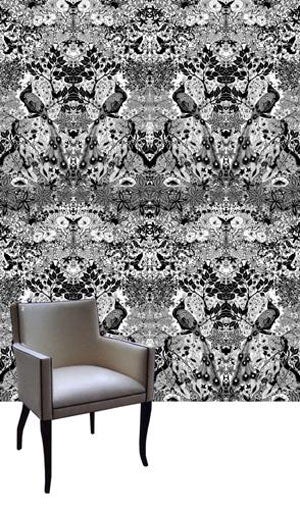Is Baroque recession-proof?
On the eve of a new V&A exhibition, Annie Deakin finds herself stuck between Baroque and a hard place

Trend forecasters and buyers know to keep a beady eye on the Victoria & Albert Museum calendar. More often than not, their globally recognised exhibitions sow the seeds of future trends.
Their next exhibition Baroque 1620-1800: Style in the Age of Magnificence celebrates the decadent and imposing art movement on a major scale. Curators, musicians, designers and cultural organizations are bending over backwards to dedicate 2009 to Baroque. This year marks the 350th anniversary of Purcell’s birth and the 250th of Handel’s death. While the BBC is broadcasting a TV series on the opulent art, the Barbican and the Royal Opera House are hosting concerts to celebrate the grandeur and majesty of the Baroque era. There is even an "All things Baroque meet-up group" on the web.
Search for the perfect furniture with The Independent house and home database, powered by mydeco.
As the bite of the recession gnaws ever deeper, isn’t it poor timing to come over all lavish? Not at all, insists Laurence Llewellyn-Bowen, the Welsh interior designer who adores the flamboyant nature of Baroque décor. Instead we should treat the swirls and curls of Baroque as a welcome antidote to credit crunch blues. "Modernism is very chilly. There’s no distraction or romance, which is important in times of economic difficulty. I can see us rushing headlong into the accommodating bosom of baroque for a bit of nourishment and fun."
In recent years, Baroque was written off as kitsch and frivolous but the modern-day look is more subtle than its historical counterpart. Instead of going the whole hog with excessive gilt leaf from floor to ceiling and gilded cherubs, designers are dabbling in the trend. The odd gold cushion, Baroque-inspired photo frame or curve on a table leg is a chic hint towards Marie Antoinette glamour.
The high street brings the Baroque era into the 21st century with funky products like Graham & Green’s avant-garde Baroque-style black metal bookshelves. Over at Heal’s, the deep red pillar candles cut with ornate swirls and acrylic fuschia photo frames sit alongside bigger ticket items like John Reeve’s acclaimed "Louis" range. Somewhat ironically, Reeves’ contemporary Baroque furniture is now regarded as a modern day classic and in this sense, current furniture is inspiring future trends.
Scottish textile designer, illustrator and screen printer Johanna Basford, who sells through mydeco.com’s design boutique, delves into the Baroque movement.
Last autumn, I oohed and ahhed at her first solo stand, a monochrome extravaganza, at 100% Design. Basford’s signature style of hand drawn prints and motifs with inky blacks is theatrical and reminiscent of the extravagant era. Her punchy black and white mugs and dinner plates are splattered with Baroque-style swirls of dense foliage, butterflies and love birds.
Justifiably, Basford recoils at the prospect of being a passing fad. "'Trend' is a word I never associate with my work or design practice," she told me last week. "I don't allow trend forecasters to dictate the style and direction of my work, instead I concentrate on creating an aesthetic which reflects my love of pattern and intricate detail, which I guess at present fits under the Baroque banner."
Extravagant embellishments, scrolling curlicues and a fondness for gold have been out of fashion for so long, it’s hard to believe that Baroque is back on trend. But the elaborate nature of Baroque appeals in an all-too-grey and sensible recession. The recent proliferation of chandeliers is, in part, a nod to the baroque movement. You’ve got to admire Studio Job who was ahead of the game when they re-interpreted the old classic with a papier mache version for Moooi. It has all the grandiose qualities of an Italian crystal chandelier yet retains a kindergarten quality courtesy of the paper and cardboard construction. Like Basford’s heavily ornate chinaware, the pendant lamp brings Baroque into the 21st century. It is a modern day tongue in cheek gesture to a classic icon.
"There is a need to dream now and go beyond the moment," said fashion designer Stefano Gabbano when he revealed his surreal Baroque-style catwalk show for the D&G Autumn 2009 collection.
The Paris trade show Maison et Objet was certainly dreaming. At Comptoir du Sud, traditional French furniture echoing the curvilinear Louis XV period was mixed with outsized neo-Baroque accessories like outsized lamps and mirrors.
Next month, when the V&A will exhibit silver bedroom furniture, designers and buyers will treat Baroque as a potent tonic to conquer the gloom of the recession. As Basford said, the overtly ornate flourishes and intricate detailing - of the Baroque movement - make pattern charming and delightful. It’s just what the trend forecasters ordered.
Subscribe to Independent Premium to bookmark this article
Want to bookmark your favourite articles and stories to read or reference later? Start your Independent Premium subscription today.

Join our commenting forum
Join thought-provoking conversations, follow other Independent readers and see their replies